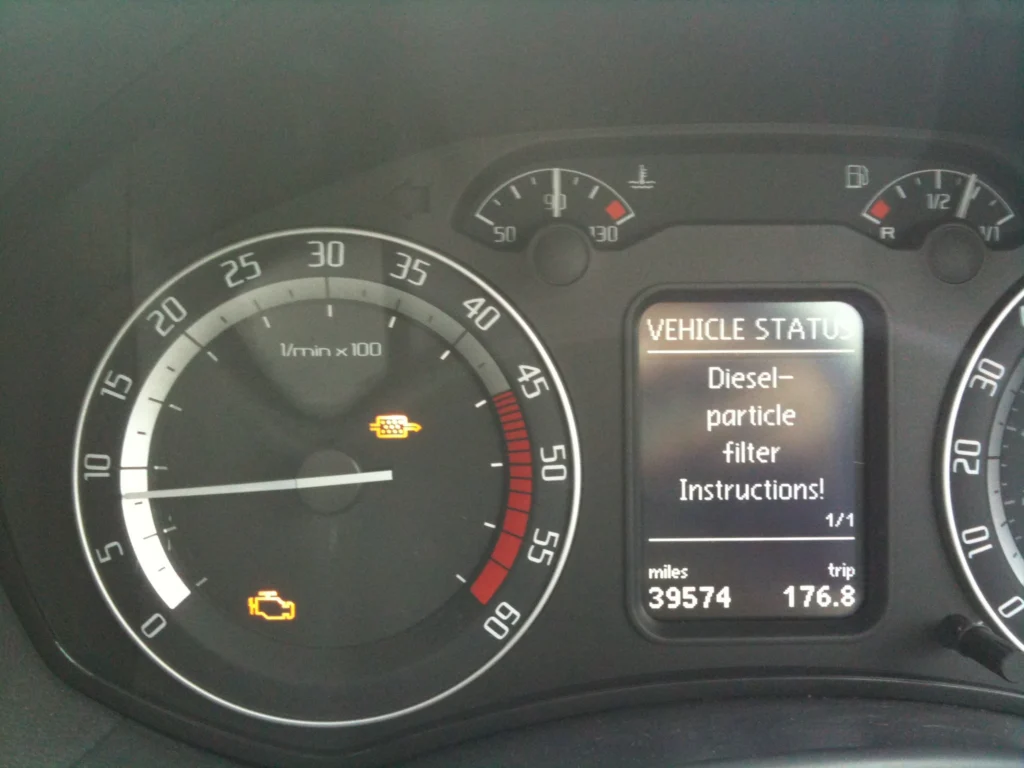Limp mode, or limp home mode, is an important safety feature in modern vehicles. It activates when the engine control unit (ECU) detects a fault that could cause damage if normal operation continues. Limp mode restricts engine performance to protect vital components until the fault can be properly diagnosed and repaired.
This article will explain What Sensors Can Cause Limp Mode, look at the most common underlying causes, and provide actionable solutions to temporarily and permanently disable limp mode. We’ll also cover related topics like ECU faults, clearing limp mode codes, and typical repair procedures.
What Triggers Limp Mode?
What Sensors Can Cause Limp Mode? Limp mode is fundamentally an electrical safety feature, meaning a sensor or wiring fault must be present to activate. Here are some of the most common sensor issues that can cause limp mode:
- Mass Air Flow (MAF) Sensor – The MAF measures incoming air volume to calculate fuel injection. Contamination or failure leads to rough idle, lack of power, stalling, and eventual limp mode.
- Manifold Absolute Pressure (MAP) Sensor – The MAP sensor monitors vacuum pressure in the intake manifold. Problems like vacuum leaks can provide faulty data to the ECU triggering limp mode.
- Oxygen (O2) Sensor – Monitors oxygen levels during combustion. A faulty O2 sensor can indicate issues like a clogged catalytic converter causing limp mode activation.
- Coolant Temperature Sensor – Measures engine operating temperature. Defective readings can mimic overheating leading to limp mode as a protective measure.
- Throttle Position Sensor (TPS) – Reports throttle blade angle to the ECU. Faulty TPS data can confuse the ECU and limit engine performance.
- Wheel Speed Sensors – Monitor individual wheel speeds for features like ABS and traction control. Irregular signals can indicate brake problems and trigger limp mode.
In addition to sensor faults, problems with wiring harnesses and connectors can also mimic sensor failures and cause limp mode.
Why Do Vehicles Enter Limp Mode?
Modern ECUs constantly monitor data from an array of sensors to optimize performance and fuel efficiency while minimizing emissions. But when a sensor reports information that doesn’t match the ECU’s programmed parameters, it assumes a problem exists that could potentially damage components like the engine, transmission, or emissions systems.
To protect these vital systems, the ECU enters a self-preservation mode that limits engine RPMs, disables cylinders, and locks the transmission in a single gear. This “limp home mode” allows the vehicle to be driven carefully to a repair shop without incurring further damage. The check engine light also illuminates to alert the driver of the issue.
What Sensors Can Cause Limp Mode? Limp mode is mainly designed to prevent catastrophic engine failure in the event of problems like overheating or loss of oil pressure. By limiting power output, the ECU reduces stress on compromised components to hopefully prevent outright failure before repairs can be made.
Most Common Causes of Limp Mode
Behind every limp mode incident, there is a root problem triggering the ECU’s protective programming. What Sensors Can Cause Limp Mode? Here are some of the most prevalent issues:
- Faulty Sensors – As mentioned above, contaminated or defective sensors can provide abnormal data to the ECU causing it to initiate limp mode. MAF and MAP sensor issues are common.
- Vacuum Leaks – Leaks in the air intake pathway disturb air volume readings and vacuum pressure causing erratic sensor data and potential limp mode activation.
- Electrical Problems – Damaged wiring and connectors can mimic failed sensors. Shorts and excessive resistance in circuits give faulty signals to the ECU.
- Transmission Problems – Automatic transmission issues like worn shift solenoids and clutch problems can confuse the ECU and trigger limp mode to prevent further damage.
- Low Fluids – Insufficient coolant, brake fluid, transmission fluid, or oil can all contribute to limp mode activation as protection from potential overheating or loss of lubrication.
- Computer Faults – In rare cases, bad coding or an internal processing error in the ECU itself can erroneously trigger limp mode with no actual sensor fault present.

Proper diagnosis of the underlying issue is key to permanently resolving limp mode problems versus just resetting codes. We’ll explore resolutions in more detail shortly.
How to Temporarily Disable Limp Mode
What Sensors Can Cause Limp Mode? Limp mode is designed to be difficult to override as it’s an important vehicle protection measure. But in an emergency where full engine power is needed, here are a few potential ways to disable it temporarily:
- Restarting – In some cases, turning the ignition fully off for 30 seconds and restarting can temporarily deactivate limp mode. This allows sensors to reset and retest.
- Battery Disconnection – With the ignition off, disconnect the battery for 2-3 minutes to clear ECU codes and data. Reconnect and limp mode may turn off until the issue recurs.
- Scanner Reset – A scan tool that can access manufacturer-level commands can often delete the limp mode code and restore normal operation temporarily.
- Sensor Fix – If an unplugged sensor triggered it, reconnecting the sensor may deactivate limp mode. Same for topping off low fluid levels.
These are only temporary measures to get you back on the road in an emergency. The underlying condition still needs to be properly repaired to permanently stop limp mode from recurring. You can just drive carefully if the limp mode is overridden.
How to Permanently Disable Limp Mode
To permanently disable limp mode you need to address the root problem triggering the ECU warning. Start by pulling the diagnostic trouble codes with an OBD2 scanner. Repair the component or system flagged by the code. Common solutions include:
- Replacing Faulty Sensors – Swap defective sensors like the MAF, MAP, or coolant temp with new OEM spec parts to restore proper readings.
- Fixing Vacuum Leaks – Inspect intake components for cracks and loose connections. Replace damaged vacuum hoses and tighten clamps.
- Wiring Repairs – Check wiring harnesses and connectors for damage. Replace corroded terminals or shorted wires.
- Fluid Changes – Replace fluids that are low including engine oil, coolant, transmission fluid, and brake fluid.
- ECU Reprogram – For repeated limp mode with no found issues, an ECU software reflash from the dealer may be needed.
- ECU Replacement – If all else fails, replacing the ECU module can overwrite faulty programming that triggers intermittent limp mode.
Addressing the root problem is key. Just resetting codes without repairs will inevitably result in limp mode returning. Take it to a professional mechanic for complex issues.
FAQs Related To What Sensors Can Cause Limp Mode
Can a Bad ECU Cause Limp Mode?
The engine control unit is the central computer responsible for activating limp mode based on data from other sensors and systems. In most cases, the limp mode is triggered by faulty data coming from other components.
However, in rare instances, a bad ECU itself can erroneously activate limp mode for these reasons:
- Corrupted Programming – Faulty parameters programmed into the ECU for evaluating sensor data can trigger incorrect limp mode activation.
- Failed Circuitry – Internal shorts or broken circuits within the ECU module can provide false sensor readings.
- Processor Errors – The ECU CPU crashing or freezing up can scramble sensor data analysis leading to limp mode.
- Interference – Electrical noise getting into the ECU circuits may distort signals and trigger faulty limp mode events.
Since the ECU itself is rarely the cause, technicians will rule out all external factors first. But if limp mode keeps occurring after sensors and wiring are verified good, ECU replacement may ultimately be needed.
How to Clear Limp Mode Codes
Before any permanent repairs can be made, reading and clearing limp mode trouble codes is a key first step:
- Connect an OBD2 scanner to access engine computer codes. There should be one for limp mode specifically.
- Follow scanner prompts to clear all stored error codes which will turn off the check engine light temporarily.
- Test drive the vehicle and see if limp mode resets. Active codes will come back if the underlying problem isn’t fixed.
- Make necessary repairs if limp mode returns. Old codes may need to be cleared again after repairs to keep them from resetting the check engine light.
- Drive for several days and verify limp mode stays inactive before considering it permanently resolved.
Clearing codes alone only masks the problem which will continue triggering limp mode until properly fixed. Think of code clearing as a diagnostic step versus a cure.
How to Solve Limp Mode Issues
What sensors can cause Limp Mode? The best process for identifying and resolving limp mode problems is as follows:
1. Scan for Trouble Codes – Use an OBD2 scanner tool to pull any diagnostic trouble codes stored by the ECU that triggered limp mode.
2. Research Code Meaning – Look up the specific meaning of each code you found to identify the sensor or system malfunctioning.
3. Inspect Components – Based on code research, inspect wiring harnesses, sensors, actuators, and other components related to the codes. Look for damage.
4. Perform Sensor Tests – Using a digital multimeter, test sensors for out-of-spec readings per factory service data. Compared to good known sensors.
5. Repair Issues – Replace damaged wiring, corroded connectors, faulty sensors, or other damaged components that diagnostic steps uncovered.
6. Clear Codes – After repairs are complete, use a scanner to clear all codes from the ECU to reset limp mode. Test drive to confirm it stays inactive.
I think doing your troubleshooting can be complex. Engage a professional mechanic for challenging or intermittent issues. Their experience in diagnosing limp mode could save substantial repair time and cost.
Can an O2 Sensor Cause Limp Mode?
The oxygen or O2 sensor is a key input device for fuel management and emissions control. It can cause limp mode activation under these circumstances:
- Contaminated Sensor – The buildup of carbon, fuel deposits, oil ash, and other contaminants on the sensor tip provides inaccurate readings to the ECU.
- Internal Sensor Failure – Damage to the internal sensing wire or element gives erroneous oxygen level data to the computer triggering limp mode protection.
- Wiring Problems – Corrosion or breaks in the O2 sensor wiring circuit give false readings or out-of-range values to the ECU causing limp mode activation.
- Exhaust Leaks – Exhaust manifold leaks near the O2 bung allow oxygen to contaminate sensor readings leading to limp mode in some cases.
What Sensors Can Cause Limp Mode? Replacing a faulty O2 sensor with a new part will certainly correct limp mode issues stemming from sensor problems. But other related issues like wiring faults, exhaust leaks, and PCM calibration errors should also be ruled out for permanent solutions.
Can a Bad ABS Sensor Cause Limp Mode?
Anti-lock brake system wheel speed sensors play an important role in vehicle stability and control. While not a common limp mode trigger, ABS sensor problems can activate limp mode in a few scenarios:
- Vehicle Stability Control – Faulty lateral acceleration data and wheel speed readings from bad ABS sensors can fool stability control systems and limit engine power.
- Brake System Faults – Short or open circuits from damaged ABS sensors can indicate non-existent brake problems triggering limp mode for safety.
- Gear Ratio Errors – Some all-wheel drive systems rely on ABS sensors to detect wheel speed differences indicating gear ratio mismatches between axles which requires torque limiting via limp mode.
So in advanced stability and drivetrain systems, it is possible for defective ABS sensors to mimic situations requiring power-limiting limp modes. Replacing damaged wheel speed sensors is key to resolving such issues.
In Closing of What Sensors Can Cause Limp Mode
Limp mode is a critical engine management program designed to protect costly powertrain components from catastrophic damage in the presence of malfunctions. Sensors provide the data that helps the ECU make smart limit-power choices.
What Sensors Can Cause Limp Mode? Knowing what triggers limp mode, the related causes, and how to assess and repair problems provides awareness and skills to get back on the road safely. Maintaining your vehicle proactively is the best way to prevent getting stranded by surprise limp mode activations down the road.





